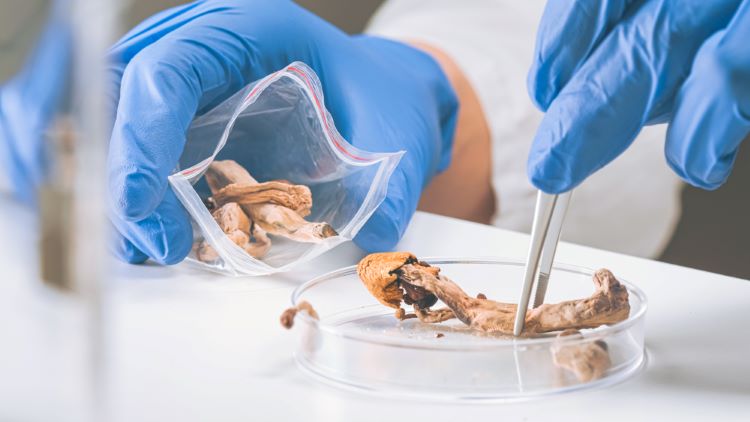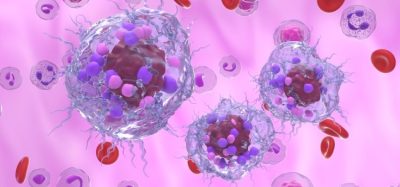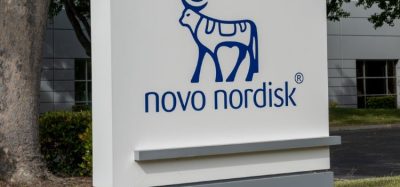Easing the mental health burden with psychedelic therapies – what’s next for the regulatory and clinical landscape?
Posted: 21 November 2024 | Steffanie Wilson | 1 comment
In this article, Steffanie Wilson, Vice President and Neuroscience Therapeutic Area Lead, Emmes Group, discusses the future of psychedelic research and highlights the impact of the FDA’s decision on Lykos Therapeutics’ NDA for its MDMA therapy to treat PTSD.


In June, the US Food and Drug Administration’s (FDA) Psychopharmacologic Drugs Advisory Committee (PDAC) rejected1 Lykos Therapeutics’ psychedelic new drug application (NDA) for midomafetamine (MDMA) capsules used alongside MDMA-assisted therapy to treat post-traumatic stress disorder (PTSD) in adults.
With the recent failure of Lykos’ trial, how do you see the future of psychedelic therapies in research, especially in treating disorders like depression, PTSD, and substance use disorder?
Psychedelics continue to show immense potential in providing rapid-acting therapeutic benefits…we must ensure….it is provable, consistent [with a] lasting therapeutic impact”
The FDA’s rejection of Lykos’ NDA is certainly a setback, but it does not signal the end of psychedelic research. If anything, it highlights the importance of the clinical trial processes and trial design, so that we can ensure that we have consistent and predictable outcomes when it comes to FDA review.
Psychedelics continue to show immense potential in providing rapid-acting therapeutic benefits, what we must ensure is that it is provable, consistent, and has a lasting therapeutic impact – these are the challenges. This is obviously complicated by the complex nature of mental health conditions – with many causes and comorbidities overlapping – such as depression, anxiety, substance abuse, and PTSD.
The next phase of research will likely involve refining these treatments and understanding and identifying factors that contribute to the durability of effects. This will lead to more structured, evidence-based treatments for these conditions, addressing the critical questions of safety and long-term efficacy.
One concern raised by committee members was that giving psychotherapy alongside MDMA was partially outside its remit as the FDA has no way to approve a psychotherapy. Does this mean that, in the future, the psychedelics sector will lean more towards advancing pure drug products rather than therapy combination approaches? Alternatively, if there is still room for drug-therapy combinations, how would these be regulated? Would the FDA have to work with state boards of psychology to sign off on these?
This is a critical issue in the psychedelics sector. The Lykos adcomm meeting highlighted a tension between the regulatory framework and the evolving use of psychedelics in combination with psychotherapy. As it stands, the FDA is limited to approving drugs, not therapies. This means that if psychedelics like MDMA are to be approved, the regulatory pathway will likely need to focus more on the drug itself, rather than its combination with psychotherapy.
That said, there may still be room for drug-therapy combinations in the future. In these cases, it could become more about how those combinations are defined, protocols designed, and ultimately, commercial use is regulated. For example, if a drug is approved by the FDA but requires a specific therapy to optimise its effects, there could be collaborations between the FDA and professional organisations, like state boards of psychology, to set guidelines for how these therapies should be delivered.
For now, the regulatory landscape remains focused on ensuring the safety and efficacy of the drug itself. But as psychedelics become more widely accepted in the clinical space, regulators may need to adapt, especially as we see more evidence of the synergistic effects between psychedelics and psychotherapy.
What does the National Institute on Drug Abuse (NIDA) funding its first ketamine study mean for the sector and US regulators’ attitude?
It is very positive and this should help accelerate research. NIDA’s funding of a ketamine study is a major step in validating the therapeutic potential of psychedelics and psychedelic-like substances, particularly for treatment-resistant conditions like depression and PTSD. It also reflects a shift in how US regulators are approaching psychedelics. While the FDA has been cautious about psychedelics due to both safety (eg, addiction) concerns and its historical legal status, there is growing recognition of their potential therapeutic benefits. This funding is proof that government bodies like NIDA are now much more willing to invest in serious research into psychedelics, recognising their potential to address unmet medical needs.
The willingness of federal institutes to fund and support studies in psychedelics is a big shift in acceptance”
Most significantly, these are publicly funded and therefore carefully spent funds, so it shows we are seeing increasingly positive results. The willingness of federal institutes to fund and support studies in psychedelics is a big shift in acceptance.
What psychedelic compounds have shown the most promise or are better suited for certain conditions?
Each of the compounds has unique properties and may be better suited for certain conditions. For example, MDMA has shown promising results in the treatment of PTSD, as seen in recent trials. Its ability to induce a state of emotional openness, combined with psychotherapy, makes it particularly effective for trauma-related disorders.
Looked at collectively, the trial data shows a high level of promise so far, especially for mental health disorders like depression, anxiety, and PTSD”
On the other hand, psilocybin has shown potential in treating depression, especially in cases that have not responded well to traditional medications – as it seems to have a more profound effect on mood disorders due to its interaction with serotonin receptors.
While ketamine has also proven effective, particularly in acute and treatment-resistant depression, and benefit here is that it acts very quickly compared to traditional antidepressants.
So, each psychedelic might have its own ideal application, but much of that depends on the specific condition being treated and the individual patient. Looked at collectively, the trial data shows a high level of promise so far, especially for mental health disorders like depression, anxiety, and PTSD.
What additional research needs to be done to answer some of the critical questions around psychedelics, particularly regarding the longevity of their therapeutic effects?
One of the key questions we must answer is the durability of treatment effects. We have seen fast-acting results, but the duration of those benefits is still unclear. Does a patient need ongoing treatment, or can a single dose provide long-term relief? This is a major area of focus for current and future trials. Additionally, understanding how these treatments affect different populations and conditions is crucial. Consequently, we now see some studies exploring dosing schedules—whether multiple doses are needed for sustained effects, and how the risk profile changes with repeated administration.
As a clinical research organisation (CRO) working with NIDA, what are some of the key challenges with conducting trials of psychedelics that you encounter? How can the sector work to overcome these?
One of the key challenges in conducting psychedelic trials is safety and participant screening. Psychedelics, especially when used in higher doses, can have unpredictable effects. We must carefully screen participants to ensure they are suitable for these treatments. A comprehensive understanding of factors that could affect the trial’s outcome, such as mental health history, is required. For example, any prior history of substance abuse or drug-seeking behaviour.
While there is growing support for psychedelic research, navigating the regulatory framework can still be difficult”
Another challenge is the regulatory process itself. While there is growing support for psychedelic research, navigating the regulatory framework can still be difficult. Trials must be designed meticulously, with strong safety protocols in place. Additionally, the variability in response to these substances means that these studies must have robust data collection and monitoring processes.
As a CRO, we work to overcome these challenges by fostering strong relationships with regulators, researchers, and participants. We also focus on designing trials that are both scientifically rigorous and ethically sound. The sector can address these challenges by continuing to build a body of high-quality research that proves the safety and efficacy of psychedelics. This will help regulators feel more confident in approving these treatments and may even streamline the approval process for future studies.
As the psychedelic therapy landscape evolves, what are the opportunities for further collaboration between CROs, regulatory agencies, and research institutions in advancing these treatments?
Collaboration will be key as we move forward. Regulatory agencies and bodies like the FDA, NIDA, and the Department of Defense (DoD) are essential in shaping the path forward for psychedelics, especially as they navigate new therapeutic frontiers.
Their involvement ensures that the research is not only scientifically rigorous but also relevant to the real-world challenges faced by specific populations. The DoD, for example, has an obvious interest in understanding how psychedelics could be used to treat trauma and mental health issues in military personnel. NIDA’s focus on addiction research has opened-up significant avenues for studying the effects of psychedelics on substance use. Their funding and regulatory guidance will help shape the research agenda and ensure that promising treatments are developed responsibly and effectively.
CROs act as the bridge between these institutions, the research community and, of course, the rising number of emerging biotech companies. By ensuring that clinical trials meet regulatory standards, CROs can facilitate a faster development cycle and ensure we successfully get these therapies to patients.
Additionally, researchers need to work closely with CROs to address any gaps in data collection and analysis, particularly concerning the safety and efficacy of these treatments across different patient populations. It is here that CROs are in a unique position to integrate cutting-edge research with pragmatic trial designs, ensuring that all stakeholders, including regulatory bodies and clinicians, are aligned in moving the field forward.
References
- FDA Briefing Document. [Internet] US FDA. 2024. Available from: https://www.fda.gov/media/178984/download
About the author


Related topics
Clinical Development, Clinical Trials, Drug Development, Drug Safety, Regulation & Legislation, Research & Development (R&D), Therapeutics
Related organisations
Emmes Group, Lykos Therapeutics, National Institute on Drug Abuse, National Institutes of Health (NIH), US Food and Drug Administration (FDA)










This article offers a thoughtful exploration of the emerging role of psychedelic therapies in addressing mental health challenges. It provides valuable insights into how these therapies could transform treatment options, while also highlighting the regulatory hurdles and clinical considerations that need to be navigated.